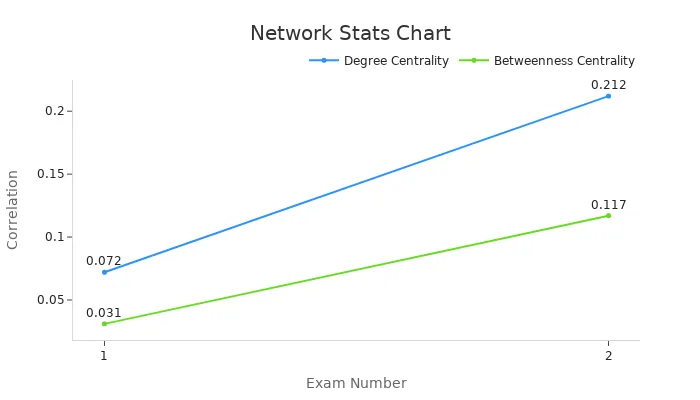
Signal distribution plays a key role in how smart classrooms function. It ensures that devices communicate effectively, creating a smooth and uninterrupted learning environment. When signals are strong and reliable, you experience fewer disruptions during lessons. This improves both teaching and learning outcomes. However, weak or inconsistent signals can lead to delays and frustration. To answer the question, how does signal distribution affect the performance of a smart class system?, it directly impacts connectivity, user satisfaction, and system reliability. Addressing these challenges is essential for creating a seamless classroom experience.
Good signal sharing is key for devices to work well in smart classrooms, reducing lesson interruptions.
Using better routers and mesh networks can greatly improve signal reach and dependability, making learning better.
Checking signal strength often with special tools finds weak spots, keeping the classroom running smoothly.
Removing walls or cutting down on electronic noise boosts signal quality, helping devices connect better and making users happier.
Using AI tools can make network management easier, handle tasks automatically, and improve how classrooms work, helping teachers teach better.
Signal distribution refers to the process of transmitting data, audio, or video signals between devices in a smart classroom. It ensures that all connected systems, such as projectors, interactive whiteboards, and student devices, work together seamlessly. Without proper signal distribution, these devices cannot communicate effectively, leading to disruptions in classroom activities.
Did you know? Purdue University implemented a course signal system to improve student retention rates. By analyzing data like student performance and learning behaviors, the system allowed teachers to make real-time interventions, enhancing learning outcomes. This highlights how effective signal distribution can directly impact education quality.
Signal distribution is the backbone of smart classroom functionality. It ensures that teachers and students can access digital tools without interruptions. For example, a strong and reliable signal allows you to stream videos, share presentations, and use interactive apps without delays. On the other hand, weak signals can cause frustration and reduce engagement. Addressing signal challenges is crucial to answering the question, "How does signal distribution affect the performance of a smart class system?" It directly influences connectivity, user satisfaction, and system reliability.
Wireless signals play a significant role in modern classrooms. Wi-Fi connects devices to the internet, enabling access to online resources and cloud-based tools. Bluetooth allows short-range communication between devices like tablets and speakers. However, these signals can face interference from walls, furniture, or other electronic devices, which may weaken their strength.
Audio and video signals ensure that multimedia content reaches students effectively. For instance, audio signals power microphones and speakers, while video signals connect projectors and displays. High-quality signal distribution ensures that everyone in the classroom can hear and see clearly, creating an immersive learning experience.
Signal strength determines how well devices in a smart classroom communicate. Strong signals ensure that your devices stay connected without interruptions. This is especially important when streaming videos, sharing presentations, or using interactive tools. A stable connection allows teachers and students to focus on learning rather than troubleshooting technical issues.
Weak or inconsistent signals can disrupt the flow of a lesson. For example, a video buffering during a lecture can break the momentum of teaching. Interference from walls, furniture, or other electronic devices often weakens signals. These challenges highlight why addressing signal strength is crucial when asking, "How does signal distribution affect the performance of a smart class system?"
Signal delays can create noticeable lags in communication. Imagine a teacher asking a question during a virtual session, but students hear it seconds later. This delay can confuse participants and reduce engagement. Smooth signal distribution ensures that interactions happen in real-time, keeping everyone on the same page.
Interruptions caused by poor signal quality can frustrate both teachers and students. A dropped connection during a live quiz or a distorted audio feed can derail the learning process. Ensuring reliable signal distribution minimizes these frustrations and enhances the overall classroom experience.
Signal problems can cause entire systems to fail. For instance, if a projector loses its connection to a computer, the lesson may come to a halt. Metrics like Mean Time to Failure (MTTF) and Failure Rate help quantify how often such issues occur. These metrics provide insights into the reliability of your smart classroom setup.
A robust system design with redundancy can prevent failures. Redundancy means having backup systems in place. For example, if one router fails, another can take over to maintain connectivity. Metrics like Availability and Maintainability measure how accessible and repairable your system is. These factors ensure that your smart classroom remains functional even when signal issues arise.
Tip: The chart below illustrates how network centrality measures correlate with exam performance. It shows the importance of maintaining strong and reliable connections in a smart classroom.

By addressing these aspects, you can better understand how signal distribution affects the performance of a smart class system and take steps to optimize it.
The hardware you use plays a major role in signal distribution. Routers, access points, and antennas act as the backbone of your smart classroom's connectivity. Routers manage the flow of data between devices, while access points extend the network's reach to cover larger areas. Antennas ensure that signals are transmitted and received efficiently. Choosing high-quality hardware ensures that your classroom devices stay connected without interruptions.
Device compatibility is another critical factor. When devices are incompatible, they may struggle to communicate, leading to delays or failures. For example, an outdated projector might not work well with modern wireless systems. High-quality devices not only improve performance but also reduce the chances of signal interference. Investing in compatible and reliable equipment ensures a smoother classroom experience.
The software managing your network determines how signals are distributed. Network protocols define the rules for data transmission, ensuring that devices communicate effectively. Bandwidth allocation is equally important. If one device consumes too much bandwidth, others may experience slow connections. Properly managing these aspects ensures that all devices in your smart classroom perform optimally.
Regular software updates keep your system secure and efficient. Updates often include fixes for bugs that could disrupt signal distribution. System integration also matters. When your devices and software work together seamlessly, you minimize the risk of connectivity issues. Keeping your software up-to-date ensures that your smart classroom operates without hiccups.
Physical barriers like walls and furniture can weaken wireless signals. For example, thick concrete walls have high attenuation values, which reduce signal strength. Tools like the Ekahau Sidekick 2 can measure these effects accurately. By understanding how barriers impact signal propagation, you can adjust your classroom layout to improve connectivity.
Electronic devices like microwaves or cordless phones can interfere with wireless signals. Noise from these devices disrupts the flow of data, causing delays or disconnections. Minimizing interference by keeping such devices away from your classroom network improves signal reliability. A clean and interference-free environment ensures better performance.
Tip: Rearranging furniture and using diagnostic tools can help you identify and resolve signal issues effectively.
Upgrading your technology can significantly improve signal distribution in a smart classroom. Advanced routers and mesh networks provide better coverage compared to traditional routers. Mesh networks are particularly useful for larger spaces or classrooms with structural barriers that create dead spots. They are also easier to manage, often through user-friendly mobile apps. While these systems may have higher upfront costs, their long-term benefits, such as improved connectivity and reduced disruptions, make them a worthwhile investment.
Mesh networks improve signal coverage and eliminate dead zones.
They simplify network management, making them ideal for educators.
Although more expensive, they are highly effective for larger or complex spaces.
Signal boosters and extenders are cost-effective solutions for enhancing connectivity. These devices amplify weak signals, ensuring that every corner of the classroom receives adequate coverage. By strategically placing boosters, you can eliminate areas with poor connectivity and maintain a seamless learning environment.
Tip: Use a Wi-Fi analyzer app to identify weak signal areas before installing boosters or extenders.
The placement of your hardware plays a crucial role in signal distribution. Position routers and access points in central locations to maximize coverage. Avoid placing them near walls, metal objects, or other electronic devices that can interfere with signals. Elevating routers on shelves or mounting them on walls can also improve signal strength.
Regularly assessing signal strength helps you identify and address connectivity issues before they disrupt classroom activities. Tools like Wi-Fi analyzers or network diagnostic software can measure signal strength and pinpoint problem areas. By conducting these assessments, you can ensure that your smart classroom remains fully functional.
Note: Regular assessments also help you evaluate whether your current setup meets the demands of your classroom's growing technology needs.
AI-driven tools can revolutionize how you manage signal distribution. These tools automate tasks like bandwidth allocation and device prioritization, ensuring optimal performance. AI systems can also enhance classroom functionality by automating attendance tracking, monitoring student behavior, and adjusting environmental conditions like lighting and temperature. These innovations not only improve connectivity but also create a more engaging and efficient learning environment.
AI tools streamline administrative tasks, allowing teachers to focus on teaching.
They optimize classroom conditions, enhancing both student engagement and comfort.
Advanced signal processing techniques can further enhance your network's reliability. These methods reduce interference and improve data transmission, ensuring that all devices in your smart classroom communicate effectively. By leveraging these techniques, you can minimize disruptions and maintain a seamless learning experience.
Did you know? AI-driven tools and advanced signal processing can significantly improve how signal distribution affects the performance of a smart class system, ensuring better connectivity and user satisfaction.
Signal distribution shapes how smart classrooms function, influencing connectivity, user experience, and system reliability. You need to address hardware, software, and environmental challenges to create a seamless learning environment. The shift toward hybrid learning models makes robust signal distribution essential for real-time interactions and content delivery. Challenges like device integration, accessibility, and reliable AV content delivery demand attention. By upgrading technology, planning strategically, and leveraging advanced tools, you can ensure scalability, security, and collaboration. These steps help educators and decision-makers build effective, future-ready classrooms that enhance learning outcomes.
Tip: Prioritize regular assessments and updates to maintain optimal performance.
Physical barriers like walls and furniture often weaken signals. Electronic interference from devices such as microwaves or cordless phones can also disrupt connectivity. You can improve signal strength by rearranging the classroom layout and minimizing interference.
Use tools like Wi-Fi analyzers or network diagnostic apps to measure signal strength. These tools help you identify weak spots and areas needing improvement. Regular assessments ensure your classroom maintains optimal connectivity.
Tip: Apps like NetSpot or Ekahau Sidekick are user-friendly and effective for signal analysis.
Yes, mesh networks provide better coverage and eliminate dead zones. They are ideal for larger classrooms or spaces with structural barriers. While they cost more upfront, their reliability and ease of management make them a smart investment.
Outdated devices often lack compatibility with modern networks, causing delays or failures. Upgrading to newer, compatible devices ensures smoother communication and reduces signal interference. Investing in quality hardware improves overall system performance.
AI tools automate tasks like bandwidth allocation and device prioritization. They optimize network performance and reduce manual effort. By using AI, you can ensure seamless connectivity and focus more on teaching.
Did you know? AI-driven systems can also monitor classroom conditions, enhancing both learning and comfort.